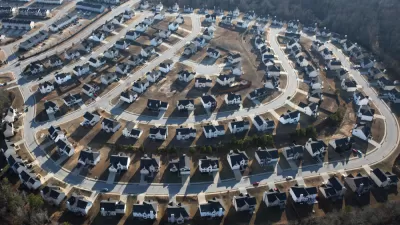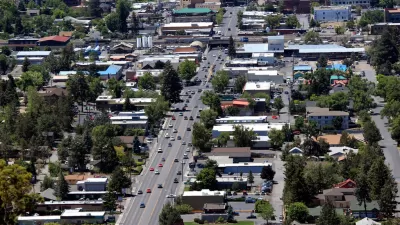The Oscar-winning film The Lives of Others recalls that famous question about governments who spy on their citizens: Who will watch the watchers? (Answer: Alberto Gonzalez.) A similar, if less cloak-and-dagger question applies to planning: Who will zone the zoners? While governments use zoning to keep polluting uses away from homes, what if the biggest polluter in a city is a government use?In most cities today, the most common polluting use is exempt from zoning: highways.
The Oscar-winning film The Lives of Others recalls that famous question about governments who spy on their citizens: Who will watch the watchers? (Answer: Alberto Gonzalez.) A similar, if less cloak-and-dagger question applies to planning: Who will zone the zoners? While governments use zoning to keep polluting uses away from homes, what if the biggest polluter in a city is a government use?
In most cities today, the most common polluting use is exempt from zoning: highways.
The dangers of highways to health is clear: children who live near a highway are twice as likely to develop asthma. If all that soot came from a single factory's smokestack, it would be in an industrial area far from homes. But along the edges of every interstate highway are fields that will one day be filled with houses, families, and children-a dangerous and incompatible use if there ever was one.
So if the land adjacent to heavy industry isn't zoned residential, doesn't it make sense to zone the land adjacent to highways for non-residential use as well? California has already considered a law requiring elementary schools be built at least 500 feet from highways, and New Haven residents are protesting plans for a new school next to two interstates. Prohibiting highways in residential areas and precluding new residential zoning along existing highways might change the calculus of highway building. It would no doubt be labeled an unfair burden. But the buffer zones may be less an unfair burden than a full assessment of the health costs of road building. They may even save money by preventing respiratory illness.
Keeping highways out of residential areas, or rezoning space along new highways for nonresidential use may make zoning once more an effective way to plan and protect citizens.

Planetizen Federal Action Tracker
A weekly monitor of how Trump’s orders and actions are impacting planners and planning in America.

Chicago’s Ghost Rails
Just beneath the surface of the modern city lie the remnants of its expansive early 20th-century streetcar system.

San Antonio and Austin are Fusing Into one Massive Megaregion
The region spanning the two central Texas cities is growing fast, posing challenges for local infrastructure and water supplies.

Since Zion's Shuttles Went Electric “The Smog is Gone”
Visitors to Zion National Park can enjoy the canyon via the nation’s first fully electric park shuttle system.

Trump Distributing DOT Safety Funds at 1/10 Rate of Biden
Funds for Safe Streets and other transportation safety and equity programs are being held up by administrative reviews and conflicts with the Trump administration’s priorities.

German Cities Subsidize Taxis for Women Amid Wave of Violence
Free or low-cost taxi rides can help women navigate cities more safely, but critics say the programs don't address the root causes of violence against women.
Urban Design for Planners 1: Software Tools
This six-course series explores essential urban design concepts using open source software and equips planners with the tools they need to participate fully in the urban design process.
Planning for Universal Design
Learn the tools for implementing Universal Design in planning regulations.
planning NEXT
Appalachian Highlands Housing Partners
Mpact (founded as Rail~Volution)
City of Camden Redevelopment Agency
City of Astoria
City of Portland
City of Laramie




























